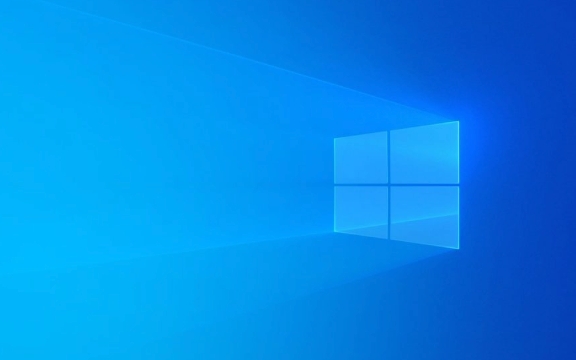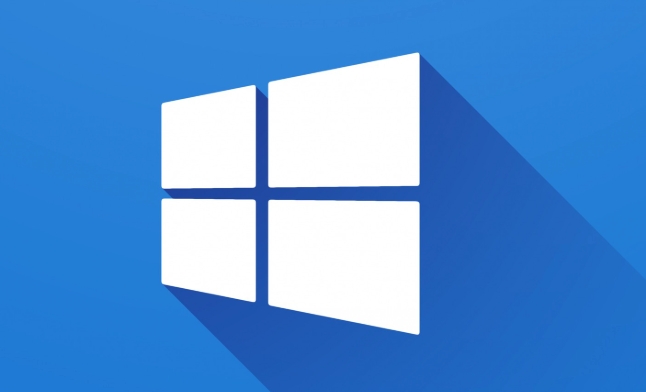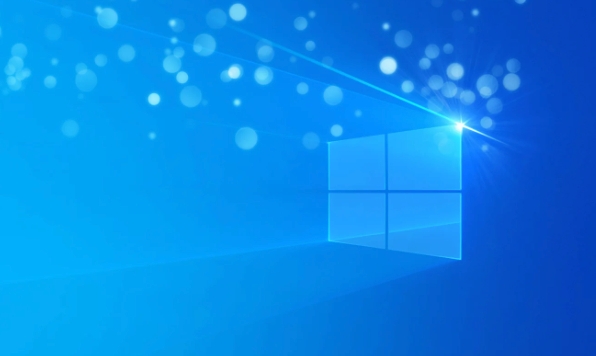Most of the problems can be solved by restarting the Explorer, running the troubleshooting tool, or checking the system files. 1. Press Ctrl Shift Esc to open Task Manager, find "Windows Explorer" and restart; 2. Run the "Search and Start Menu" diagnostic tool in "Settings → System → Troubleshooting"; 3. Run the command prompt as an administrator, and execute the sfc /scannow and DISM /Online /Cleanup-Image /RestoreHealth commands to repair system files; 4. Open Device Manager to roll back, update or uninstall the graphics card driver to troubleshoot driver problems. In addition, you can try restarting your computer, checking for update patches, or testing third-party software interference in safe mode.

The Windows Start Menu cannot be opened or does not respond is a problem that many users have encountered. This problem is usually not a big problem, but it does affect the user experience. Let’s talk about the key points first: in most cases, restarting the Explorer, running troubleshooting tools or system file checks can be solved.

1. Restart "Windows Explorer" and try
Many people don't know that the Start menu is actually part of the Explorer. If it gets stuck, the entire start menu will not respond.

You can do this:
- Press
Ctrl Shift Escto open the task manager directly - Find the "Windows Explorer" item (under the "Process" tab)
- Right-click to select "Restart"
Doing this is equivalent to restarting the display core of the Start Menu and taskbar. If it is just a temporary stuck, it will usually return to normal.

2. Troubleshooting that comes with the operating system
Windows comes with some automatic repair gadgets, which can sometimes help you find out the problem.
The operation steps are as follows:
- Open Settings → System → Troubleshooting
- Find "Other Troubleshooting" or "Find Other Questions"
- Click the diagnostic tool in the "Search and Start Menu" and run it
This tool will check for common problems, such as index corruption, permission exceptions, etc., and try to fix them automatically.
3. Check whether the system files are corrupted
If the above method does not work, it may be that there is an error in the system file. At this time, you can use the system-owned commands to scan and repair.
How to operate:
- Open the command prompt as an administrator (you can enter "cmd" in the search bar and right-click "Run as administrator")
- Enter the following two commands, and then enter the next one after each execution:
sfc /scannow
DISM /Online /Cleanup-Image /RestoreHealth
These two commands are used to scan system files and repair system images respectively. The execution time may be long. It is recommended to restart the computer after completion to see if there is any improvement.
4. Update or rollback the graphics card driver
You may not have expected that the graphics card driver will also affect the start menu. Especially when this problem occurs after you have recently updated the driver, you can consider falling back.
Operation method:
- Open Device Manager
- Expand Display Adapter
- Right-click the current graphics card → “Properties”
- You can select "Rollback Driver" or "Update Driver" in the "Driver" tab
If you are not sure if it is a driver problem, you can uninstall the current driver first, and then restart the system and let the default version automatically install the system.
Basically these common solutions. Sometimes the problem may come from temporary system errors, and a simple restart can be solved. If it is not complicated but is easy to ignore, it is system update patch conflict or third-party software interference. At this time, you can try to test it in safe mode.
The above is the detailed content of Windows start menu not working. For more information, please follow other related articles on the PHP Chinese website!

Hot AI Tools

Undress AI Tool
Undress images for free

Undresser.AI Undress
AI-powered app for creating realistic nude photos

AI Clothes Remover
Online AI tool for removing clothes from photos.

Clothoff.io
AI clothes remover

Video Face Swap
Swap faces in any video effortlessly with our completely free AI face swap tool!

Hot Article

Hot Tools

Notepad++7.3.1
Easy-to-use and free code editor

SublimeText3 Chinese version
Chinese version, very easy to use

Zend Studio 13.0.1
Powerful PHP integrated development environment

Dreamweaver CS6
Visual web development tools

SublimeText3 Mac version
God-level code editing software (SublimeText3)

Hot Topics
 Windows can't access shared folder on network
Jun 30, 2025 pm 04:56 PM
Windows can't access shared folder on network
Jun 30, 2025 pm 04:56 PM
When encountering the "Windowscan'taccesssharedfolderonnetwork", you can usually solve the problem through the following steps: 1. Turn on the network discovery and file sharing function and turn off password protection; 2. Make sure that the target computer is enabled to share and set the correct permissions; 3. Check the firewall rules and service status to ensure that it allows shared access; 4. Use the credential manager to add network credentials for long-term and stable connection.
 Windows 'Getting Windows ready, Don't turn off your computer' stuck
Jun 30, 2025 pm 05:18 PM
Windows 'Getting Windows ready, Don't turn off your computer' stuck
Jun 30, 2025 pm 05:18 PM
When you encounter Windows stuck in the "GettingWindowsready, Don't turnoff your computer" interface, you should first confirm whether it is really stuck; 1. Observe whether the hard disk indicator light is flashing, 2. Check whether the fan sound has changed, 3. Wait at least 30 to 60 minutes to ensure that the system has enough time to complete the update operation.
 Windows clipboard history not working
Jun 30, 2025 pm 05:14 PM
Windows clipboard history not working
Jun 30, 2025 pm 05:14 PM
When the Windows clipboard history is not working, you can check the following steps: 1. Confirm that the clipboard history function is enabled, the path is "Settings>System>Clipboard", and if it is not enabled, Win V will not respond; 2. Check whether the copy content type is limited, such as large images, special formats or file paths may not be saved; 3. Ensure that the system version supports it, Windows 101809 and above, and some enterprise versions or LTSC do not support it; 4. Try to restart the ClipboardUserService service or end the clipups.exe process; 5. Clear the clipboard cache or reset the settings, close and then turn on the "Clipboard History" or run the "echooff|clip" command to clean up the cache
 Windows is stuck on the welcome screen
Jun 30, 2025 pm 04:44 PM
Windows is stuck on the welcome screen
Jun 30, 2025 pm 04:44 PM
Wait for a few minutes and try to call out the task manager to confirm whether it is fake death; 2. Force shutdown to enter the recovery environment twice, use safe mode to uninstall the driver, turn off automatic login, and check and kill viruses; 3. Use other administrator accounts or new accounts to determine whether the user configuration file is damaged; 4. Uninstall or roll back the hardware driver, especially the graphics card driver, unplug the peripherals to troubleshoot hardware conflicts; 5. Use the sfc and DISM commands to repair the system files, and if it is invalid, back up the data and reinstall the system. When Windows is stuck in the welcome interface, you should first eliminate the false death situation, then check the user configuration, driver and system file integrity in turn, and finally consider reinstalling the system.
 How to fix a stuck Windows restart screen?
Jun 30, 2025 pm 05:10 PM
How to fix a stuck Windows restart screen?
Jun 30, 2025 pm 05:10 PM
Don't rush to reinstall the system when the computer is stuck in the Windows restart interface. You can try the following methods first: 1. Force shutdown and then restart. Apply to the situation where the update is stuck. Repeat two or three times or can skip the lag; 2. Enter the safe mode to check, select Start repair or system restore through troubleshooting. If you can enter safe mode, it may be a driver or software conflict; 3. Use the command prompt to repair the system files, enter the three commands sfc and dism in the recovery environment to repair the damaged files; 4. Check the recently installed hardware or driver, unplug the non-essential devices or uninstall the new driver to eliminate incompatibility issues. In most cases, the above steps can solve the phenomenon of restart lag. If it really doesn’t work, consider reinstalling the system and paying attention to backing up data in advance.
 Windows cannot find 'ms-settings:'
Jun 30, 2025 pm 04:31 PM
Windows cannot find 'ms-settings:'
Jun 30, 2025 pm 04:31 PM
When you encounter the prompt "Windowscannotfind'ms-settings:'", the system settings page usually cannot open normally. The solution is as follows: 1. Check the integrity of the system file and run the sfc/scannow and DISM/Online/Cleanup-Image/RestoreHealth commands as administrator; 2. Reset the default protocol handler and confirm that the default application of ms-settings is "Settings" in "Default Application By Protocol"; 3. Check whether the registry key HKEY_CLASSES_ROOT\ms-settings exists and is complete, and import the registry backup of the normal system if necessary; 4. Use the system
 How to run an app as an administrator in Windows?
Jul 01, 2025 am 01:05 AM
How to run an app as an administrator in Windows?
Jul 01, 2025 am 01:05 AM
To run programs as administrator, you can use Windows' own functions: 1. Right-click the menu to select "Run as administrator", which is suitable for temporary privilege hike scenarios; 2. Create a shortcut and check "Run as administrator" to achieve automatic privilege hike start; 3. Use the task scheduler to configure automated tasks, suitable for running programs that require permissions on a scheduled or background basis, pay attention to setting details such as path changes and permission checks.
 'This operation has been cancelled due to restrictions in effect on this computer' Windows fix
Jun 30, 2025 pm 04:47 PM
'This operation has been cancelled due to restrictions in effect on this computer' Windows fix
Jun 30, 2025 pm 04:47 PM
The error "This operation has been cancelled because of restrictions on the computer" is usually caused by permissions or policy restrictions. Solutions include: 1. Check whether to use an administrator account, and if not, switch or change the account type; 2. Run the program as an administrator, or set a shortcut to always run as an administrator; 3. Check Group Policy restrictions, set suspicious policies to "not configured" or "disabled", but be careful that there is no Group Policy Editor for the Home Edition; 4. If registry editing is disabled, you can re-enable it by creating a .reg file; 5. Troubleshoot third-party software interference, temporarily close the security software or management startup items. Trying the above methods in order usually solves the problem.






